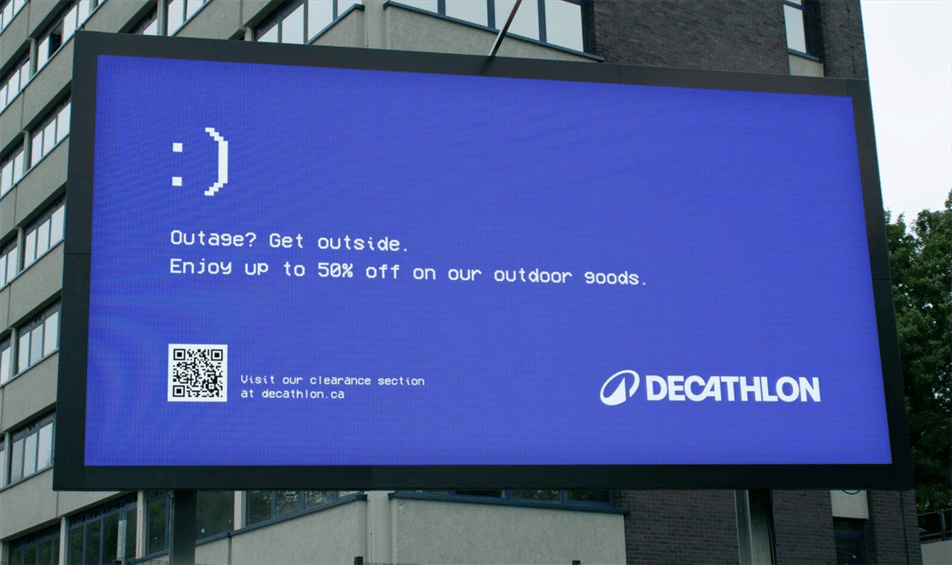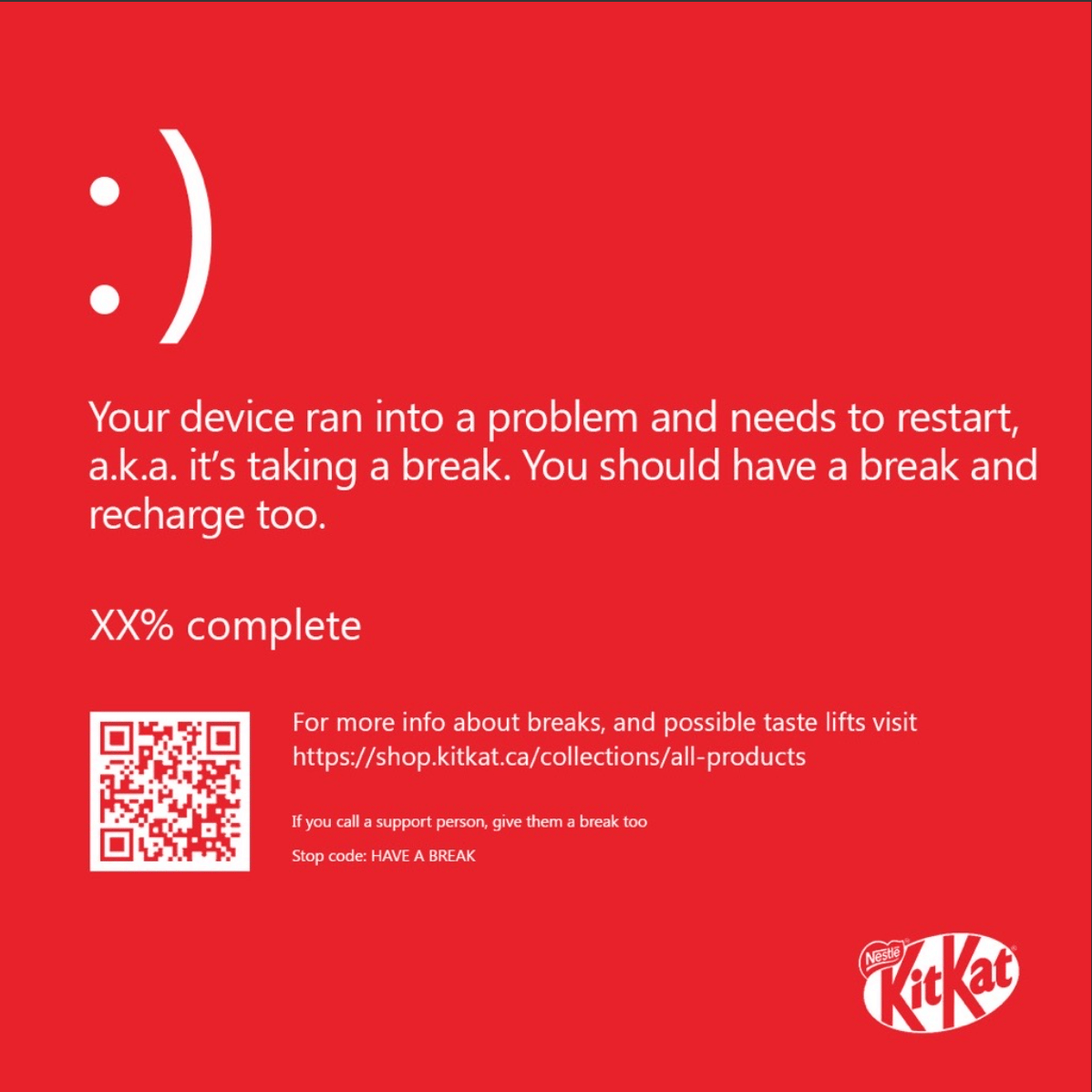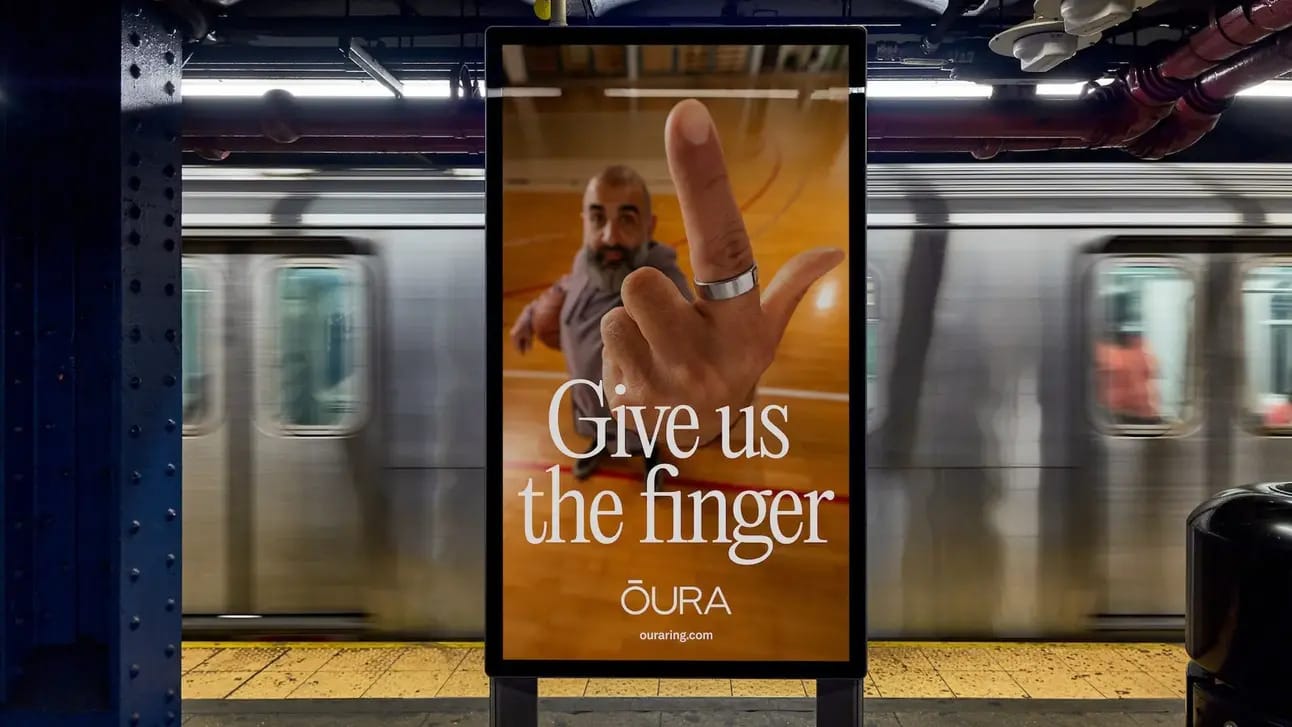Hi friends,
Last July, something historic happened. Not the good kind of historic.
A global IT outage brought the world to its knees. Airlines grounded. Banks crashed. Businesses froze. The infamous Microsoft "blue screen of death" appeared on screens everywhere.
While everyone else panicked, two brands saw opportunity.
Decathlon and KitKat didn't just react, they moved.
Within hours, they had digital billboards live, turning a global crisis into brilliant marketing moments.
And here's the crazy part: it worked so well that marketers like us are still talking about it months later.
But first, let's talk about a health tech company that's making aging cool again.
Copywriting Example
OURA Ring
Most health brands sell you the same dream: "Stay young forever! Look 25 at 50! Turn back the clock!"
Oura was like, "Screw that. Getting older isn't something to fear; it's something to strive for."
Their latest campaign is called "Give Us the Finger."
Provocative? Yes. Attention-grabbing? Absolutely.
But here's the genius: it's not what you think.
"Give Us the Finger" is an ode to the iconic form factor of the Oura Ring and signature placement on the index finger, where it captures the most precise and consistent health data.
The campaign shows real people living fully at every age. A 70-year-old tango dancer. A street basketball artist in his 60s. A mountain climber with gray hair.
These are not models of youth, they're models of living well.
Instead of selling anti-aging, they're selling pro-aging. The message? "The goal isn't to stay young. It's to stay well."
But here's what makes this copy brilliant: they're not lecturing you about health. They're inviting you into a club.
"It's a nod to an 'if you know, you know' community focused on extending their healthspan."
They made aging aspirational. They made wisdom cool. They made experience sexy.
Takeaway? When everyone in your industry zigs, zag. Don't just be different for the sake of it. Find the truth everyone else is too scared to say, then say it boldly.
Marketing Secret
Reactive Marketing

Credits: www.billups.com

Credits: KitKat Canada
Back to July 2024. While the world faced a global outage where tech disruptions grounded airplanes and hit banks, businesses, schools, and more, outdoor brand Decathlon and Nestle's chocolate brand KitKat took the opportunity to generate sales and build their brand.
Here's what Decathlon did:
They purchased digital out-of-home (DOOH) ad space to encourage consumers to head outdoors and shop.
The ad, which mimics Microsoft Windows's error screen, flips the sad face emoticon to a happy face and features text in white that reads, "Outage? Get outside."
Brilliant, right?
While everyone's computers were showing the blue screen of death, Decathlon created their own version but with a smile instead of a frown.
The ad also informed consumers that the brand would be having a sale where shoppers can enjoy up to 50% off on outdoor goods.
KitKat did something similar.
The chocolate brand recreated Microsoft Windows' error screen in a trend; they found the perfect intersection between the cultural moment and their brand message.
Decathlon's whole thing is getting outside. When technology fails, what's the natural alternative? The great outdoors.
KitKat's slogan is "Have a break." When your computer crashes and forces you to stop working, what should you do? Take a break.
Here's how to master reactive marketing:
1. Stay plugged in. This requires a team clued into the edge of trends, an agile creative development and approval workflow and of course, a bit of risk appetite.
2. Move fast. While others are still figuring out what happened, you need to already have your response live.
3. Stay authentic. Brands first need to find a relevant cultural moment and react in an authentic voice that is aligned to the brand personality.
4. Don't force it. Not every trending topic is your moment. Pick your spots wisely.
The best reactive marketing doesn't feel opportunistic. It feels like your brand was meant to comment on this moment.
Your homework: Set up Google Alerts for three things relevant to your industry. When something breaks, practice writing a reactive response. Even if you don't use it, you're training your brain to think reactively.
Because in a world where everyone's planning six months ahead, the brands that win are the ones ready to move in six hours.
Talk soon,
Alen
P.S. KitKat had executed a similar activation for a previous Facebook and WhatsApp outage in the past. Consistency in reactive marketing? Now that's next-level thinking.

